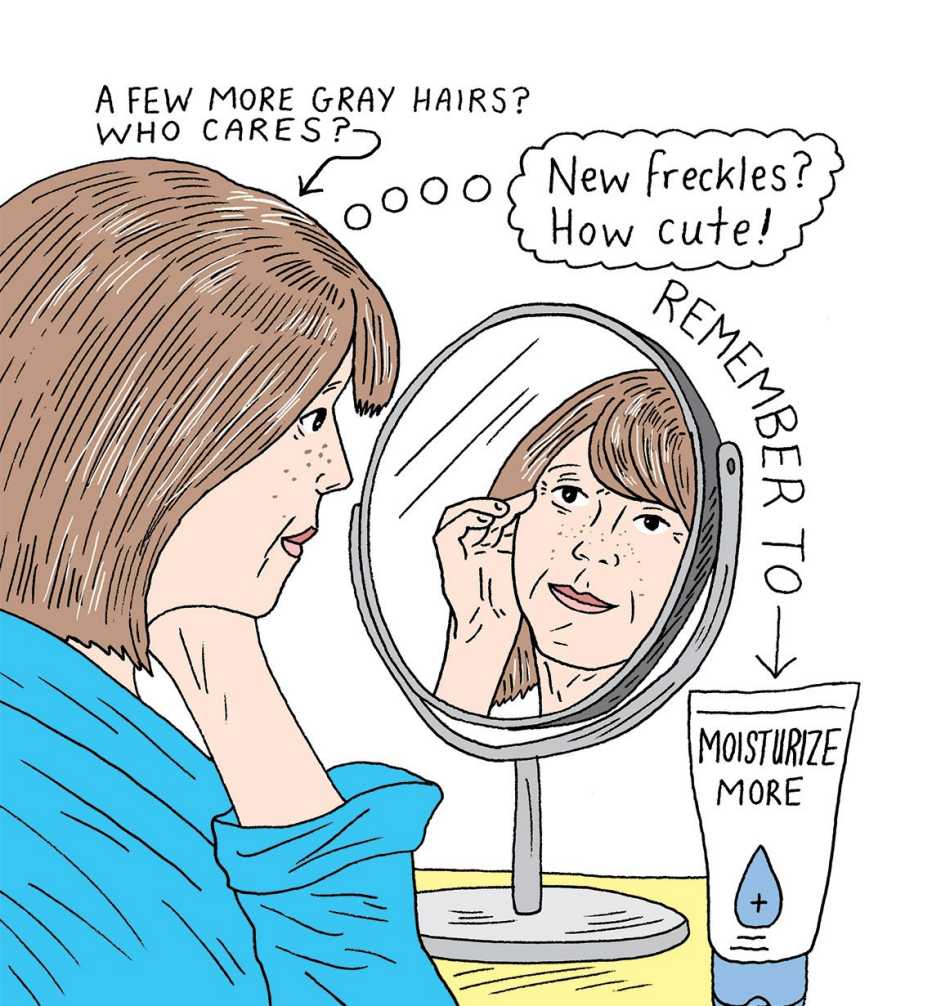AARP Hearing Center


The good news in your 60s: From Meryl Streep to Liam Neeson, stars in their 60s are still stunners and action heroes.
The reality check in your 60s: Keep an eye out for subtle changes that may indicate larger issues.
- You may not even have facial wrinkles. If you’re dark-skinned, or even if you’re light-skinned but always wore sunscreen and a hat, you might not have any wrinkles until age 70.
- You can hold your place in time a bit longer. Head off future signs of aging related to sun exposure by wearing sunscreen and a broad-brimmed hat outside. In a recent, headline-grabbing Massachusetts General Hospital study, women who did this faithfully and had low sun exposure looked more youthful. Skin care products, such as those containing retinoids, can also help. Munching foods packed with vitamin C, like citrus, could lower your wrinkle risk as well.
- You’ve got more age spots than before. Nine out of 10 Caucasian women and men in their 60s have brownish skin spots triggered by years of sun exposure. Keep an eye on them. While most solar lentigines (the medical term for them) are harmless, see your doctor if you notice anything unusual. Up to half of Americans who live to age 65 will have either basal or squamous cell carcinoma at least once, and the average age for melanoma is 63.
- Your skin needs more moisture than ever. Mature skin doesn’t stay as hydrated as younger skin. It allows more moisture to escape and may have fewer sweat and oil glands, too. As many as 75 percent of older adults have dry skin. Try taking shorter baths or showers, using warm (not hot) water and mild cleansers. Apply a moisturizer you like every day. A humidifier can also help your dry skin.
- Weirdly you’re in your cavity-prone years again. In fact, your teeth are almost as vulnerable to tooth decay as your grandchildren’s. Thanks to oral-health problems such as dry mouth, older fillings and less-than-stellar brushing and flossing routines, 1 in 5 adults in their 60s have untreated tooth decay. If lack of health insurance is holding you back (which is common after age 65), look into dental discount cards and dental-school clinics for affordable care. Another reason why dentist visits are critical: The median age of diagnosis for oral cancers is 62; men are at twice the risk, compared with women.

































































More From AARP
5 Tips to Exfoliate Safely and Effectively
Pro advice for unveiling vibrant-looking skin
How to Choose a Better Facial Moisturizer
Determine the results you want before picking a product
Are Celebrity Beauty Brands Worth a Try?
Idris Elba, Hailey Bieber and Brad Pitt join the growing number of stars with beauty and skin care lines